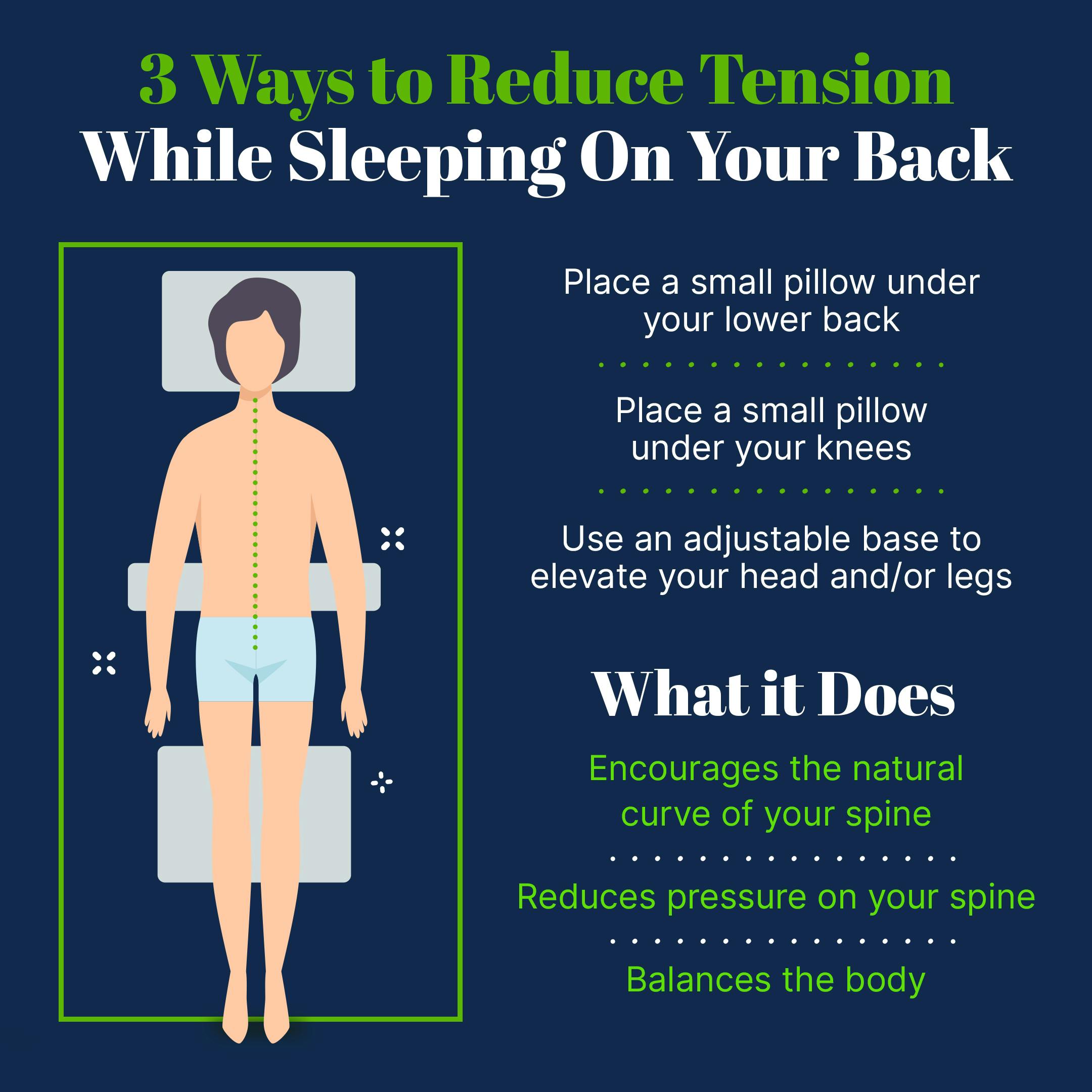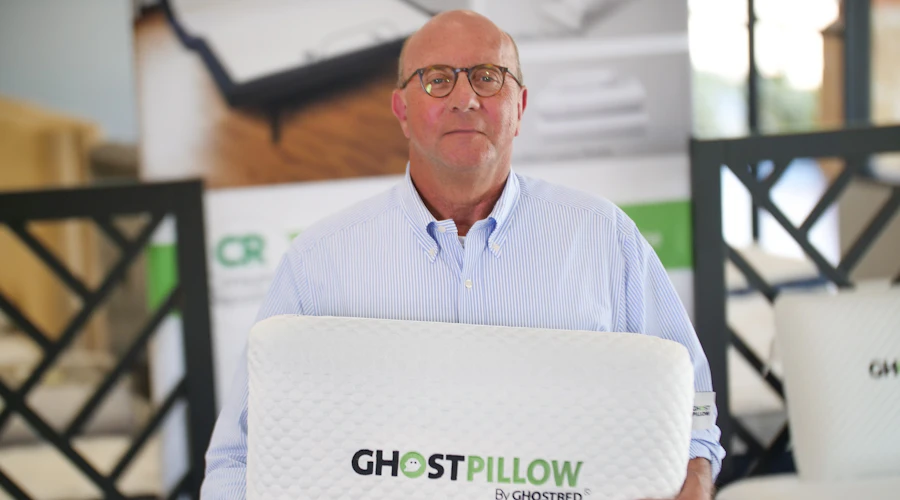Did you know that many doctors recommend sleeping on your back? Not only is it the healthiest position for your spine, it can also help reduce snoring and symptoms of sleep apnea.
However, some people find it difficult to get comfortable when sleeping face-up. If you're used to sleeping on your side or stomach, switching over to this new position may take some time. This article will provide a few helpful tips so you’ll be back sleeping like a pro in no time flat!
Overview: How to Train Yourself to Sleep on Your Back
Our top tips to help you become a back sleeper:
- Use a pillow to support your head and neck. This will help keep your spine in alignment.
- Place a pillow underneath your knees. This will take pressure off of your lower back.
- Experiment with different types of pillows until you find the one that is comfortable for you.
- Replace your mattress with a firmer option.
- Practice relaxation techniques before going to bed. This will help you to fall asleep more easily.

Why Train Yourself to Become a Back Sleeper?
Are you suddenly waking up with new and unexplained aches and pains? Has your doctor or therapist recommended you try sleeping on your back for health reasons? Maybe you read that sleeping on your back is great for soothing acid reflux. Whatever brought you here, there are a ton of people just like you who would love to give back sleeping a try.
Sleeping face-up allows your head, neck and spine to rest in a neutral position, which promotes proper alignment and can reduce pain. In addition, sleeping on your back with your head slightly elevated can help reduce symptoms of heartburn and acid reflux.
Why Can’t I Sleep on My Back?
If you're sleeping on your back and feeling discomfort in the lower part of your spine, it may be because of your pillow (or lack thereof). Try placing a small pillow or rolled-up towel underneath your lower back while you sleep. This can help reduce pain and encourage the natural curve of your spine.
You can also place a pillow under your knees, which can help reduce tension and keep you laying flat. Look for a pillow that’s not too high but also soft enough to offer good comfort. This will typically be a pillow of medium loft.
Another way to reduce tension and help you stay asleep on your back is to elevate your head and/or legs using a power adjustable base.

Who Shouldn’t Sleep on Their Back?
Back sleeping may not be suitable for everyone. If you’re pregnant or have other health conditions, you may want to consult with your doctor before trying to become a back sleeper. Some people with acid reflux or sleep apnea, for example, may find that back sleeping increases the risk of complications. Back sleeping can also exacerbate snoring and make it more difficult to breathe. As a result, you may be better off sleeping on your side or stomach.
How to Sleep on Your Back: Our Sleep Experts Weigh In

We took the opportunity to consult with our team of talented Sleep Experts to learn some of their top tips for getting off your belly and onto your back at bedtime. Here’s some of the best advice we learned:
1. Consider Pillow Positioning
Specially designed positioning pillows are an excellent tool if you want to improve your sleep quality, especially if you’re trying to learn how to stop sleeping on your stomach. By placing a thinner pillow under your knees, you can promote alignment of your back and alleviate lower back pain. Similarly, the right pillow under your head can help keep your spine in proper alignment. Look for one that’s on the flatter side, or use an adjustable loft pillow.
2. Try a Weighted Blanket
The deep pressure stimulation provided by a weighted blanket can help minimize insomnia, trigger serotonin production and ease anxiety. It can also help you train yourself to become a back sleeper. If you’re used to sleeping on your stomach or side, a weighted blanket will simulate the gentle pressure that you feel on the front of your body in these sleep positions. It kind of “tricks” your brain into thinking you’re in your preferred position.
3. Create a “Great Wall of Pillows”
A "wall of pillows" will keep you from rolling over in bed. Surround yourself with pillows on all sides, with one under your head and two next to each arm for extra support.
4. Select a Firmer Mattress
A too-soft mattress can cause you to sink into your bed, which puts pressure on your spine and can lead to pain in the morning. If you can’t get the hang of back sleeping, it might be time to invest in a new, firmer mattress. Be sure to do your research, though, as not all firm mattresses are created equal. Some can feel like a rock! You’ll want to find a mattress that provides proper support for your back and hips while still being cozy and comfortable.
Be Persistent for Back Sleeping Success
If you're struggling to sleep on your back, you can also try a variety of sleep-inducing techniques before turning out the lights. If you're still having trouble falling asleep, whatever you do, don't force yourself to stay in one position if it’s not working. It's more important that you get some rest, even if it means sleeping on your stomach or side.
As humans, we are creatures of habit, making persistence important when learning how to sleep on your back. Try rolling to your back when you catch yourself in another position. With a little practice, you will be able to sleep more soundly and wake up feeling refreshed and well-rested.


